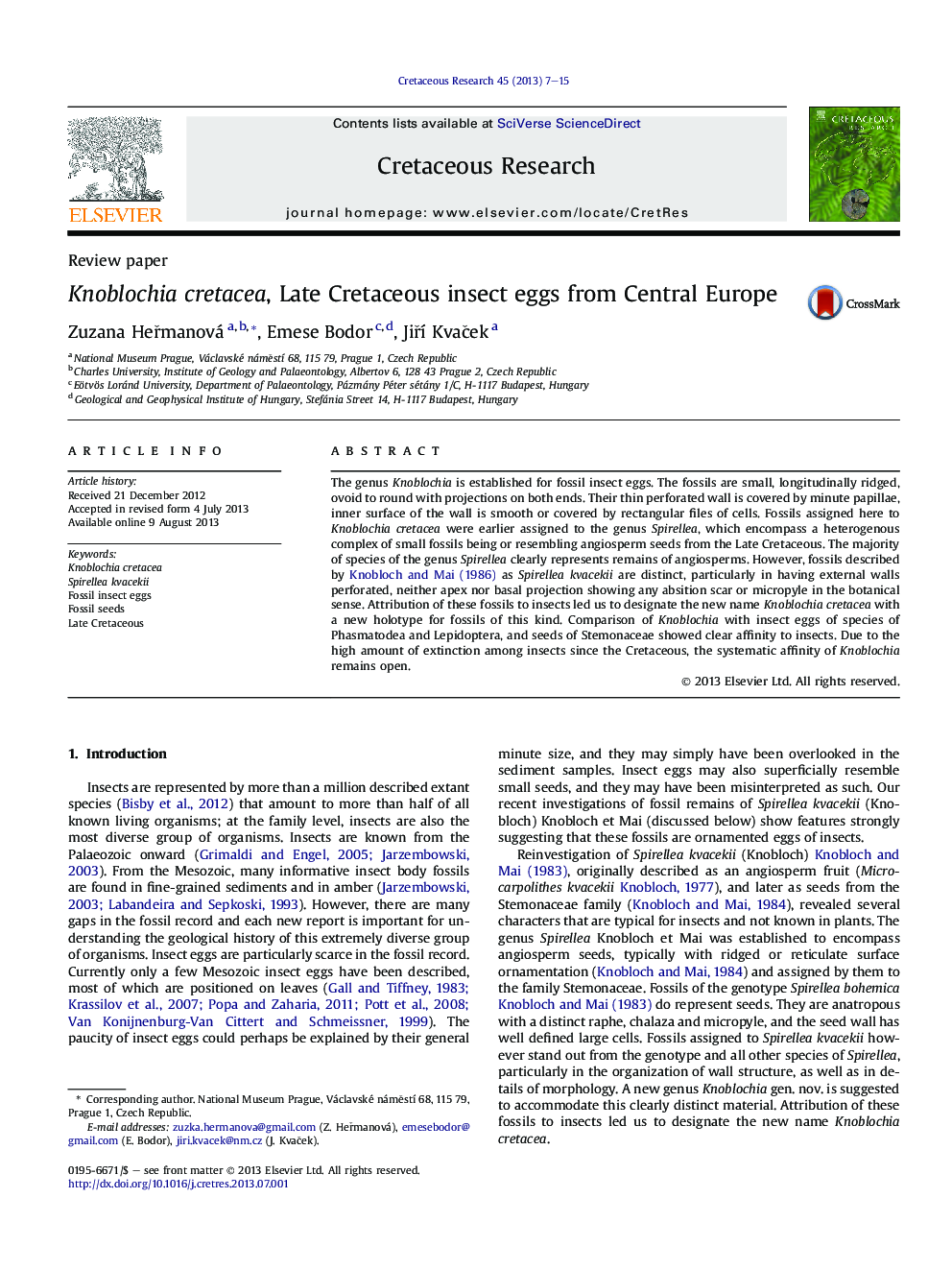| Article ID | Journal | Published Year | Pages | File Type |
|---|---|---|---|---|
| 4747299 | Cretaceous Research | 2013 | 9 Pages |
Abstract
The genus Knoblochia is established for fossil insect eggs. The fossils are small, longitudinally ridged, ovoid to round with projections on both ends. Their thin perforated wall is covered by minute papillae, inner surface of the wall is smooth or covered by rectangular files of cells. Fossils assigned here to Knoblochia cretacea were earlier assigned to the genus Spirellea, which encompass a heterogenous complex of small fossils being or resembling angiosperm seeds from the Late Cretaceous. The majority of species of the genus Spirellea clearly represents remains of angiosperms. However, fossils described by Knobloch and Mai (1986) as Spirellea kvacekii are distinct, particularly in having external walls perforated, neither apex nor basal projection showing any absition scar or micropyle in the botanical sense. Attribution of these fossils to insects led us to designate the new name Knoblochia cretacea with a new holotype for fossils of this kind. Comparison of Knoblochia with insect eggs of species of Phasmatodea and Lepidoptera, and seeds of Stemonaceae showed clear affinity to insects. Due to the high amount of extinction among insects since the Cretaceous, the systematic affinity of Knoblochia remains open.
Keywords
Related Topics
Physical Sciences and Engineering
Earth and Planetary Sciences
Palaeontology
Authors
Zuzana HeÅmanová, Emese Bodor, JiÅÃ KvaÄek,
